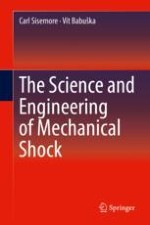2020 | OriginalPaper | Buchkapitel
4. Shock Environment Characterization Using Shock Response Spectra
verfasst von : Carl Sisemore, Vít Babuška
Erschienen in: The Science and Engineering of Mechanical Shock
Aktivieren Sie unsere intelligente Suche, um passende Fachinhalte oder Patente zu finden.
Wählen Sie Textabschnitte aus um mit Künstlicher Intelligenz passenden Patente zu finden. powered by
Markieren Sie Textabschnitte, um KI-gestützt weitere passende Inhalte zu finden. powered by
